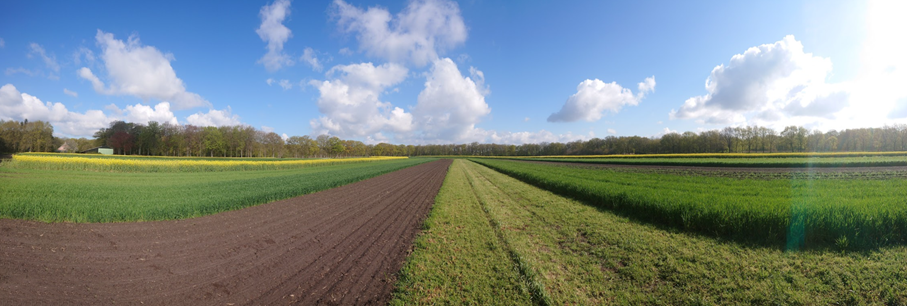Strip cultivation heading for third year
March 14, 2022In 2020, Cosun started participating in a multi-year strip cultivation project under the supervision of HAS Den Bosch: the Natuurakker (nature field). On 12 hectares, research will be carried out for seven years on crop strips of 6 meters wide to see whether nature development can go hand in hand with the profitable cultivation of food products. Chicory is one of the crops and this innovative project is heading for its third year.
Lessons learned
For 2022 we will make some adjustments to come closer to the optimal circumstances. We are still looking for an optimal combination of crops. Oats and rye have now disappeared and have been replaced by barley, wheat and rapeseed respectively. With this we now have two strips of barley and two strips of wheat. The other crops are: sugar beet, chicory, potatoes, capuchins and alfalfa. In addition, a strip of shrubs and a beetle bank have been integrated to allow natural enemies to hibernate.
There already appears to be a lower disease and pest pressure in the second year (2021). Biodiversity has also increased. In the third year (2022) we will do even more monitoring to further substantiate these assumptions.
Benefits of strip cultivation
The field with different crops, grown alternately in strips and surrounded by nature, must ensure, among other things, a rich biodiversity, high soil fertility and (economically) sustainable food production. Strip cultivation should lead to a more resistant crop and in time it limits the amount of crop protection products required. Above all, it provides a beautiful landscape.
We learn a lot from this strip cultivation. We are happy with this opportunity to study for seven years whether we can contribute towards resilient food production systems of today and tomorrow.

